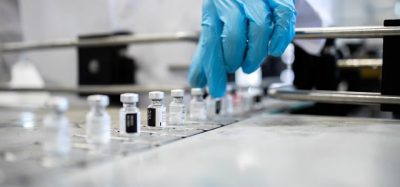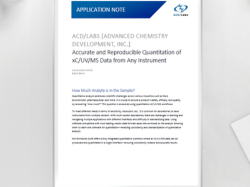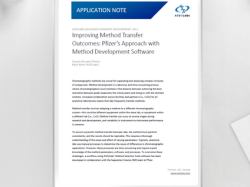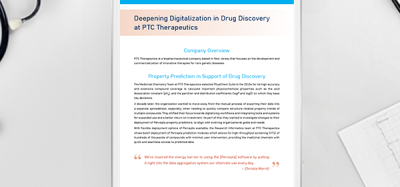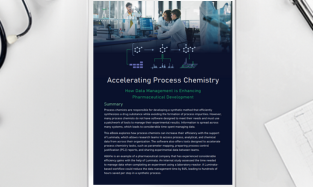Can HPLC assay methods really be considered quality critical tests?
Posted: 5 September 2014 | David Elder (JPAG member and consultant) | No comments yet
Analytical method specificity is assessed using ICH (International Conference on Harmonisation) Q2 (2005). Although, certain methods are not specific enough for their intended purposes, they may have other advantages. Both titrimetric and UV (Ultra-violet spectroscopy) assays are non-specific, but have superior precision (ca. 0.1-0.5% RSD (Residual Standard Deviation)) compared with the corresponding specific HPLC (High Performance Liquid Chromatography) assay methods (>0.5% RSD).
A method’s ability to rapidly identify significant changes in the true mean of an API (Active Pharmaceutical Ingredient) is essential for any quality critical test. Hofer et al modelled a scenario where for the first 50 batches of an API, the true mean was 99.5% and the standard deviation (σ) was 0.5%; thereafter the true mean dropped to 99.0%, with unchanged σ. The modelling showed an inability to identify this significant change by trending the HPLC assay data. The authors proposed the use of a mass balance approach (100% – % total impurities) demonstrating unequivocally that it is relatively straightforward to detect changes using this approach.
The analytical methodology variability is frequently larger than the manufacturing process variability, particularly for API manufacture. Generally, the analytical method σ should be ≤one-sixth of the proposed specification range; i.e. 6σ capability. Ermer4 assessed the maximum allowable σ for an API assay method. He showed for an API assay method using duplicate determinations, where the lower specification limit is 98.0% and with 0.5% total impurities, that the analytical method σ should be ≤0.17%. Ermer et al5 used 44 different APIs, and 156 different stability studies to determine a generic precision value for HPLC assays, i.e. 1.1%6. Similarly, Hofer et al3 reported that the mean intermediate precision values were between 0.6-1.1% and Görög7 indicated variability was about 1%.
Based on this typical analytical variability of ca. 1%, and assuming an API specification ranges of ±2.0% (i.e. 98.0-102.0%), several commentators3,4,5,7 have expressed significant concerns about the utility of HPLC assay methods to monitor API quality (trending API potency, trending API stability, releasing batches whose true potency is 98.0-102.0% or meaningfully investigating OOS (Out of Specification) results). Skrdla et al8 indicated that ‘assay results are simply not stability-indicating’ because of the intrinsic assay variability. The impact of method variability on OOS results is also constrained by the FDA’s 2006 guidance, as individual replicates, as well as the mean value, should lie within the acceptance criteria9. Hofer et al3 modelled the probability of finding a ‘false OOS’ and demonstrated that this is highly dependent on method variability, as well as the API true mean. They also reflected that there was a 1% chance of OOS results when the σ was 0.6%, with a true mean of 99.4%, but this increased 9-fold when the σ increased to 1%, with an identical true mean. The possibility of seeing ‘false OOS’ increases with the number of tests performed on the same batch, i.e. as in the case of routine stability testing3. This issue can be circumvented by registering broader API specifications based on process capability, but this requires regulatory endorsement.
Hofer et al3 assessed the potency data from eight API batches using both standard HPLC assay and the mass balance approach. Although the mean assay data were similar, the precision of the former data was about 6-8 fold higher than the corresponding mass balance HPLC assay approach. Skrdla et al8 proposed the complete removal of the external standard HPLC potency assays from routine use within stability studies and advocated utilising the more precise mass balance HPLC assay approach. Finally, method variability has an adverse impact on the predicted shelf life of the API which can be addressed using an accurate and very precise analytical method10.
In conclusion, without some relaxation of the standard API specification limits (normally, 98.0-102.0%) the use of a standard HPLC assay to monitor API quality must be approached with caution due to its inability to monitor quality critical changes.
References
- ICH Q2 (R1). 2005. Validation of analytical procedures: Text and methodology. http://www.ich.org/fileadmin/Public_Web_Site/ICH_Products/Guidelines/Quality/Q2_R1/Step4/Q2_R1__Guideline.pdf. Accessed on 28th March 2014.
- Dejaegher B., et al. 2006. Improving method capability of a drug substance HPLC assay. Pharm. Biomed. Anal. 42: 155-170.
- Hofer J.D., et al. 2007. Is HPLC assay for drug substance a useful quality control attribute? Pharm. Biomed. Anal. 44: 906-913.
- Ermer J. 2001. Validation in pharmaceutical analysis. Part I: An integrated approach. Pharm. Biomed. Anal. 24: 755-767.
- Ermer J., et al. 2005a. Precision from drug stability studies. Investigation of reliable repeatability and intermediate precision of HPLC assay procedures. Pharm. Biomed. Anal. 38: 653-663.
- Ermer J., et al. 2005b. Validation in pharmaceutical analysis Part II: Central importance of precision to establish acceptance criteria and for verifying and improving the quality of analytical data. Pharm. Biomed. Anal. 37: 859-870.
- Gorög S. 2005. The sacred cow: the questionable role of assay methods in characterising the quality of bulk pharmaceuticals. Pharm. Biomed. Anal. 36: 931-937.
- Skrdla P.J., et al. 2009. Use of a quality-by-design approach to justify the removal of the HPLC weight % assay from routine API stability testing protocols. Pharm. Biomed. Anal. 50: 794-796.
- 2006. Guidance for industry: investigating Out-of-Specification (OOS) results for pharmaceutical production. US department of health and human services, Food and Drug Administration, CDER.
- Magari R.T. Uncertainty of measurement and error in stability studies. Pharm. Biomed. Anal. 45: 171-175.



